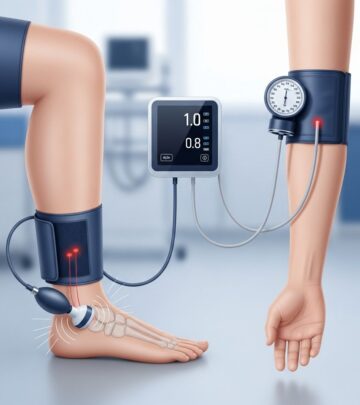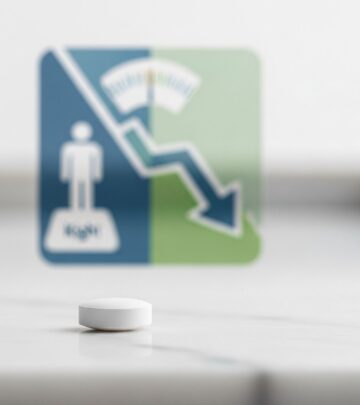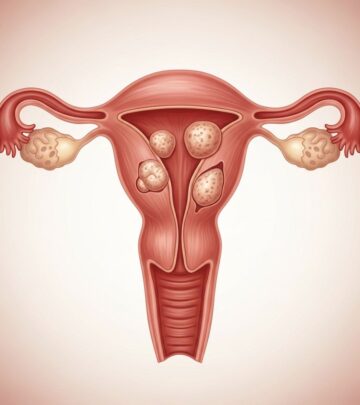Blood Clots During Menstruation: When to Seek Medical Advice
Exploring the causes and implications of blood clots during menstruation and guidance on when professional medical evaluation is necessary.

Blood Clots During Menstruation: A Concern?
Passing blood clots during your menstrual period is a common experience for many women. Small clots are typically normal, while large clots or heavy bleeding may signal an underlying health problem requiring medical evaluation. Understanding when clots are harmless and when they may indicate a concern is essential for women’s health.
Menstrual Blood Clots: Normal or Not?
During menstruation, the body sheds the lining of the uterus. This process naturally involves bleeding and, occasionally, the formation of blood clots as a result of the body’s anticoagulant mechanisms being overwhelmed during heavy flow.
- Small clots (smaller than a grape) are typically not a cause for worry.
- Large clots (bigger than a grape or quarter) may suggest abnormal bleeding and warrant medical assessment.
- The frequency and size of clots may vary among individuals and across different monthly cycles.
Heavy Menstrual Bleeding (Menorrhagia)
Menorrhagia is the medical term for menstrual periods with abnormally heavy or prolonged bleeding. Heavy bleeding can lead to passing large clots and may interrupt daily activities due to discomfort.
- Signs of menorrhagia:
- Soaking through one or more sanitary pads or tampons every hour for several consecutive hours.
- Needing double sanitary protection (e.g. both a pad and tampon).
- Getting up at night to change protection.
- Bleeding that lasts more than a week.
- Passing blood clots larger than a quarter.
- Feeling tired, fatigued, or short of breath as a result of blood loss.
- Limiting daily activities due to flow or cramps.
Potential Causes of Abnormal Menstrual Blood Clots
Heavy periods and large clots may result from various underlying causes. Unpredictable, excessive, or irregular bleeding is termed abnormal uterine bleeding. Common causes include:
- Hormonal imbalances: Including thyroid dysfunction, polycystic ovary syndrome (PCOS), or perimenopausal changes.
- Uterine fibroids: Non-cancerous growths in the uterus that can increase bleeding.
- Polyps: Benign growths in the uterine lining.
- Adenomyosis: Endometrial tissue growing into muscle wall of the uterus.
- Blood disorders: Conditions affecting clotting, such as von Willebrand disease.
- Medications: Blood thinners or hormonal medications may alter bleeding patterns.
- Other medical conditions: Including cancers (rare), pelvic infections, or systemic illnesses.
When Should You Be Concerned?
Passing small clots is often normal, but medical attention should be sought if:
- You pass clots larger than a grape or quarter.
- You soak through one pad or tampon per hour for multiple hours in a row.
- You experience bleeding between periods or after menopause.
- Symptoms of anemia develop—fatigue, shortness of breath, weakness.
- Daily activities are disrupted due to blood flow or cramping.
| Clot Size | Typical Explanation | Recommended Action |
|---|---|---|
| Small (less than grape) | Normal menstrual process | No action needed |
| Large (greater than grape/quarter) | Possible sign of menorrhagia | Consult health care provider |
| Continuous large clots & heavy flow | Potential serious underlying condition | Seek prompt medical attention |
Diagnosis: What to Expect from Your Health Provider
If heavy menstrual bleeding or large blood clots are concerning, your health care provider will evaluate your symptoms and may recommend diagnostic steps, including:
- A thorough medical history and discussion of menstrual cycle patterns.
- Physical examination.
- Keeping a menstrual diary: tracking bleeding days, flow heaviness, and sanitary products used.
- Blood tests: To screen for anemia and blood disorders.
- Pelvic ultrasound: To check for fibroids, polyps, or other abnormalities.
- Other diagnostic procedures may be recommended based on initial findings, such as hysteroscopy or biopsy.
Associated Specialists and Care Teams
Depending on your findings, you may be referred to:
- Obstetricians and Gynecologists: Specialists in female reproductive health.
- Hematology: For blood disorders and anemia management.
Treatments for Heavy Menstrual Bleeding and Blood Clots
Treatment depends on the underlying cause, severity of symptoms, desire for future fertility, and overall health status. Possible interventions include:
- Medications:
- Hormonal therapy: Birth control pills, progestins, or hormonal IUDs can regulate cycles and reduce bleeding.
- Antifibrinolytic agents: Tranexamic acid can help reduce heavy bleeding by promoting clot stability[10].
- Nonsteroidal anti-inflammatory drugs (NSAIDs): Reduce bleeding and cramps.
- Iron supplements: For iron deficiency and anemia management.
- Surgical and Procedural Interventions:
- Endometrial ablation: Destroys the uterine lining to lessen or stop bleeding. Can greatly reduce heavy periods, although fertility is affected—reliable contraception is necessary until menopause.
- Myomectomy: Removes fibroids while preserving the uterus.
- Hysterectomy: Removes the uterus—only considered after other treatments fail or when bleeding is severe and uterus preservation isn’t desired.
- Treating underlying conditions:
- Thyroid treatment, management of polyps/fibroids, or other specific care.
Living with Heavy Menstrual Bleeding
Managing menorrhagia or abnormal bleeding can be challenging but is possible through medical care. Many women avoid seeking help due to normalization of symptoms, but support is available. Key strategies include:
- Keep a record of periods and clots—this aids diagnosis and management.
- Seek regular checkups if symptoms persist or worsen.
- Discuss all treatment options with your care provider, considering your health goals and needs.
- Talk to your doctor about any disruption to normal life because of bleeding issues.
Frequently Asked Questions (FAQs)
Q: Are menstrual blood clots always a sign of a medical problem?
A: No. Small blood clots during menstruation can be normal, especially during heavier flow days. However, passing large clots regularly or experiencing prolonged heavy bleeding may indicate an underlying disorder and should be evaluated medically.
Q: What symptoms indicate that I should see a doctor about menstrual bleeding?
A: Seek medical advice if you soak through pads/tampons in less than an hour for multiple hours in a row, pass large clots (larger than a quarter), experience bleeding between periods or after menopause, or have symptoms of anemia.
Q: Can abnormal menstrual bleeding be managed with medication?
A: Yes. Hormonal therapy, antifibrinolytic agents like tranexamic acid, and NSAIDs are commonly used to reduce bleeding. Iron supplements may help if you develop anemia due to blood loss. The right approach depends on your diagnosis and health profile[10].
Q: What are the risks associated with untreated heavy menstrual bleeding?
A: Risks include development of iron deficiency anemia—which leads to fatigue, weakness, and other health problems—as well as significant effects on quality of life due to pain, inconvenience, and emotional distress.
Q: What procedures might be recommended if medication does not control bleeding?
A: Procedures include endometrial ablation, myomectomy for fibroids, or hysterectomy in severe or refractory cases. Choice depends on underlying cause, symptoms, and fertility preferences.
Sign Up for Women’s Health Updates
Get the latest information from women’s health experts, including updates on health topics, wellness, complex conditions, and new research findings. Sign up for expert health newsletters and stay informed about advancements in diagnosis and treatment for abnormal menstrual bleeding.
Key Takeaways
- Passing small menstrual clots is usually normal, but large, frequent clots or very heavy bleeding suggest it is time to consult a medical professional.
- Heavy periods can limit daily life and might signal underlying conditions, such as fibroids, hormonal imbalances, or blood disorders.
- Multiple treatments are available—from medications to minimally invasive procedures and surgery—based on cause and severity.
- Recording your symptoms and discussing them openly with care providers will ensure you receive the most appropriate diagnosis and therapy.
References Used for this Article
- Mayo Clinic: “Blood clots during menstruation – A concern?”
- Mayo Clinic: “Heavy menstrual bleeding – Symptoms and Causes”
- Mayo Clinic: “Heavy menstrual bleeding – Diagnosis and Treatment”
- Mayo Clinic: “Heavy periods: Can folic acid help?”
- Flushing Hospital: “Do You Have Menorrhagia?”
Read full bio of medha deb












